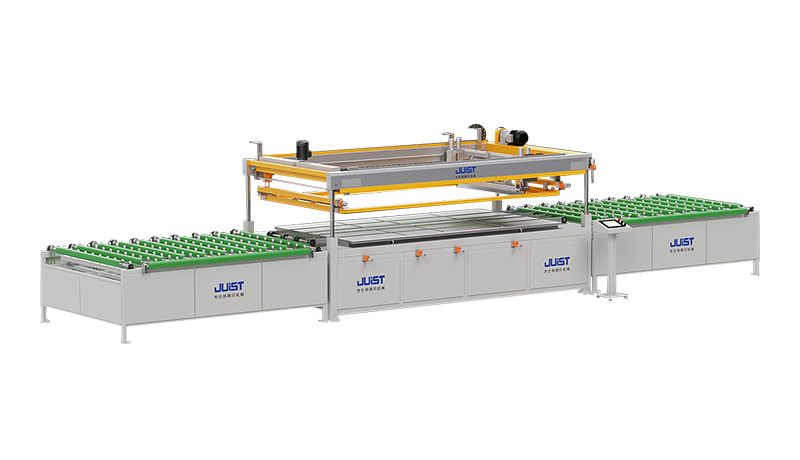+86-519-83387581
Breaking the Shackles of Transparency: How Does Glass Transform from a Curtain Wall to an Architectural Canvas?
In contemporary architectural practice, glass is no longer a simple light-transmitting material, but is undergoing an identity revolution driven by digital printing technology. Architectural-grade glass printing equipment transforms traditional curtain walls into programmable functional interfaces through a nano-precision inkjet system, allowing each piece of glass to carry unique visual information and intelligent functions. This technology breaks through the boundaries of building materials and decorative craftsmanship, making the building surface an active system that integrates structural support, energy conversion, and environmental regulation, redefining the way buildings and the environment communicate.
Da Vinci in the Robotic Arm: How Does Precision Printing Interpret the Art of Architecture?
The ultra-large-format printing engine is like a digital painter in the architectural world. Its multi-print head array system can achieve artistic-level pattern reproduction on an architectural scale. The surface adaptive algorithm allows each arc of the glass to be accurately covered with ink, while the intelligent UV curing system ensures the long-term stability of the pattern under complex climatic conditions. What's even more amazing is that these devices can not only present visual patterns, but also print invisible circuits through functional inks, turning ordinary architectural glass into a touchable smart interface, realizing advanced functions such as light regulation and energy collection.
Thinking ink: How do special inks give glass superpowers?
The core secret of architectural printed glass lies in those special inks with "special functions" - they are either smart materials that can automatically adjust the transmittance according to the intensity of sunlight, or transparent conductors that can convert sunlight into electrical energy. After rigorous climate aging tests, the patterns formed by these inks can remain unchanged for decades under extreme temperature differences, strong ultraviolet radiation and acid rain erosion. The newly developed multifunctional composite ink can even achieve multiple functions such as conductivity, heat insulation, and self-cleaning in a single print, making architectural glass truly a breathing smart skin.
The magic mirror of the future city: How does printed glass reshape the urban experience?
Walking in a building complex that uses printed glass technology, people will find that the entire city has become a huge interactive interface - the glass curtain wall changes color with the angle of sunlight, the building facade displays real-time environmental data, and the transparent photovoltaic glass silently collects clean energy. In the field of cultural heritage protection, this technology can accurately reproduce historical patterns, allowing modern buildings to communicate with ancient civilizations across space. What is most anticipated is that the dynamic patterns generated by parametric design enable the building facades to respond to seasonal changes and urban activities, giving cold glass the ability to express emotions.
The touchstone of time: How does printed glass withstand the test of half a century?
In the simulation laboratory, printed glass samples are undergoing accelerated tests equivalent to 50 years of climate aging, from polar cold to desert heat, from typhoon-level wind pressure to earthquake simulation. These rigorous tests are only to ensure that every piece of printed glass that leaves the factory can become a permanent companion for the building. The professional verification system not only focuses on the durability of the material, but also pays more attention to the long-term stability of functional indicators - the resistance change of the conductive line cannot exceed 3%, the response speed of the dimming system must be consistent, and the attenuation of photovoltaic conversion efficiency must be controlled within a reasonable range.
Digital Construction Symphony: When BIM Meets Industrial Printing
The following scene may appear on future construction sites: BIM models directly drive large-scale printing equipment, and construction robots work together to accurately transform design drawings into artistic patterns on the facade. The cloud-based pattern database provides designers with a vast amount of inspiration, while augmented reality technology helps construction workers proofread the printing results in real time. Even more exciting is that this technology is extending to on-site construction, and mobile high-altitude printing workstations allow architects to print at the latest









